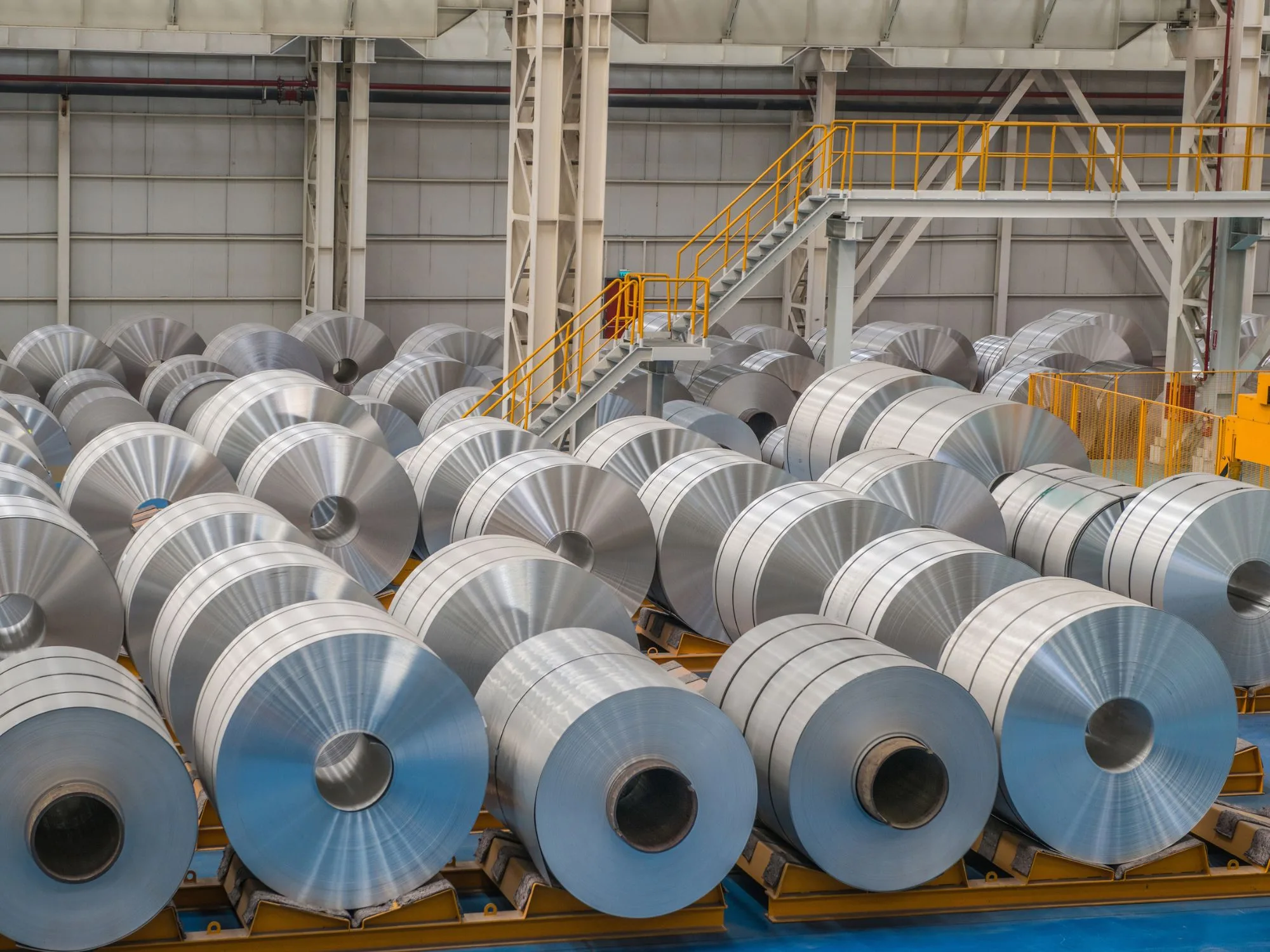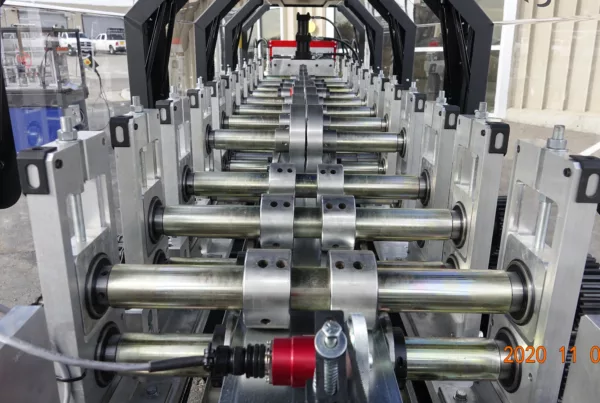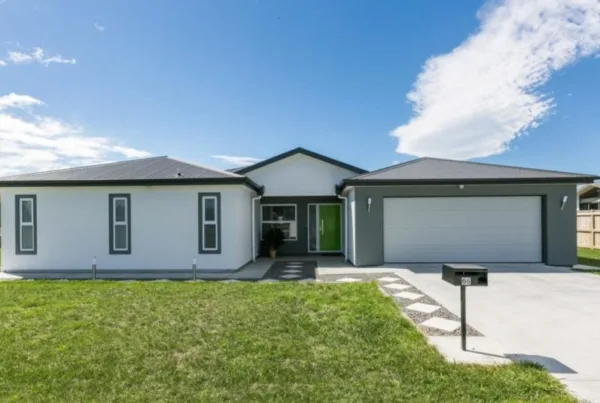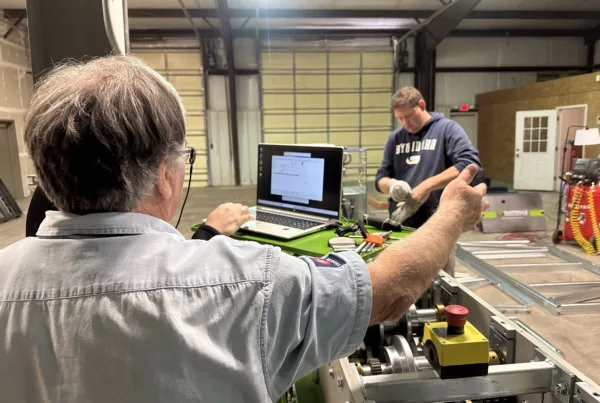Galvanized steel, specified as ASTM A653/A653M, is the industry’s standard for producing cold-formed steel members that deliver superior corrosion resistance and long-term durability. Whether fabricating wall panels, trusses, or structural components through the roll forming process, choosing the correct zinc coating, G60 vs. G90, is critical for ensuring your steel framing system performs over decades of service.
Why Corrosion Resistance Matters in Steel Framing?
Corrosion is one of the most persistent threats to the structural integrity of any steel structure. Cold-formed steel members are lightweight and precise, but without proper galvanizing, moisture and environmental exposure can reduce the service life of the building. The zinc coating provides a sacrificial barrier, protecting the underlying steel from oxidation and maintaining structural performance. This built-in corrosion resistance is what makes galvanized steel framing ideal for long-term use, even in high-humidity or coastal conditions.
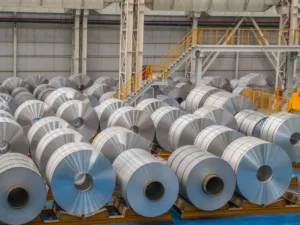
What Is ASTM A653/A653M?
ASTM A653/A653M is the U.S. standard specification for sheet galvanized steel in continuous coil form. It defines coating weights (such as G60 vs. G90), mechanical properties, and test methods to ensure consistent protection. The standard governs everything from yield strength to coating adhesion, helping manufacturers and builders verify that their cold-formed steel members meet performance benchmarks. For the roll forming process, using coils certified under ASTM A653/A653M ensures each steel profile maintains its corrosion-resistant zinc layer even after being formed, punched, and cut.
Learn more by reviewing “Continuous Sheet Galvanizing ASTM A653 (G60, G90) vs. Batch Hot-Dip Galvanizing ASTM A123” from American Galvanizers Association (AGA).
G60 vs. G90: What’s the Difference?
The difference between G60 vs. G90 comes down to the thickness of the zinc coating. The “G” number represents the total coating weight of zinc applied to both sides of the sheet, measured in ounces per square foot.
G60 = 0.60 oz/ft² total zinc
G90 = 0.90 oz/ft² total zinc
This means G90 provides roughly 50% more zinc than G60, directly improving corrosion resistance and extending the life of cold-formed steel members. However, both coatings comply with ASTM A653/A653M and are suitable for use in the roll forming process when matched with proper project requirements.
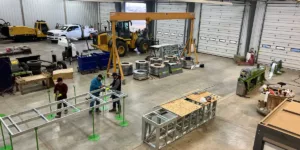
When to Use G60 vs. G90?
Choosing G60 vs. G90 depends on environmental exposure and building application:
G60: Ideal for interior and dry environments, such as commercial fit-outs, light framing, or modular units protected from moisture.
G90: Recommended for exterior walls, roofing systems, or projects near coastal or industrial regions where humidity, salt, or pollutants accelerate corrosion.
Scottsdale’s Steel Coil Ordering Information (V2025.3) provides guidance on sourcing ASTM A653-compliant coils and selecting the correct galvanizing specification for your roll forming process.
Advantages of Building with Steel Framing Using Roll Forming Technology
When fabricators use galvanized steel in the roll forming process, they gain both precision and protection. Advanced roll formers ensure each profile is cut, dimpled, and punched without damaging the zinc layer, preserving corrosion resistance throughout the steel framing assembly. The result is a seamless workflow, from coil to finished frame, where every cold-formed steel member is accurate, labeled, and ready for installation.
Key advantages include:
- Longevity: Zinc coating maintains corrosion resistance for decades.
- Consistency: ASTM A653 standards guarantee predictable coating performance.
- Efficiency: Automated roll forming process reduces waste and handling.
- Sustainability: Galvanized steel is recyclable, supporting sustainable steel framing
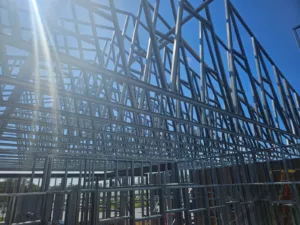
Building for Durability with Galvanized Cold-Formed Steel
Understanding the science behind galvanized steel, coating standards like ASTM A653/A653M, and the performance difference between G60 vs. G90 helps builders make informed decisions about durability and cost. For long-lasting cold-formed steel members, pairing the correct galvanizing grade with advanced roll forming process ensures optimal corrosion resistance and structural performance across all steel framing projects.
Scottsdale Knowledge Base is a comprehensive repository of information, data, design aids, tools, expert advices, manuals, and many other resources on prefabricated steel framing.
Not only is it a powerful tool for any architect, engineer, contractor, framing shop, homebuilder, building material supplier, or anyone involved in cold-formed steel framing, it also enables seamless integration of Scottsdale’s industry-leading steel framing roll former equipment and technology into virtually any work flow. All licensed customers and ScotSteel subscribers receive complementary access to Knowledge Base. Become a member today of our ScotAI-assisted steel-framing information platform, and elevate your business!
Additional Scottsdale Roll Forming Solutions and Resources
- Blog – Know How to Order Steel Coils for Roll Forming Operations
- Blog – The Best Data-Driven Roll Forming Technology for Steel Framing Production
- Blog – Ultimate Guide to Steel Framing Manufacturing Shop and Floorplan
- Blog – Understanding the Energy Consumption of Roll Forming Machines
- Video – The Best Containerized Factory Solution for Remarkable Steel Homes
- Video – Coil Loading for Powered Scotpanel and Scottruss Decoiler
- Financial Services
To learn more about Scottsdale’s roll forming solutions and steel framing ecosystem, visit us at www.scottsdalesteelframes.com, call us at +1 (888) 406-2080, or email us at rollformers@scottsdalesteelframes.info.
